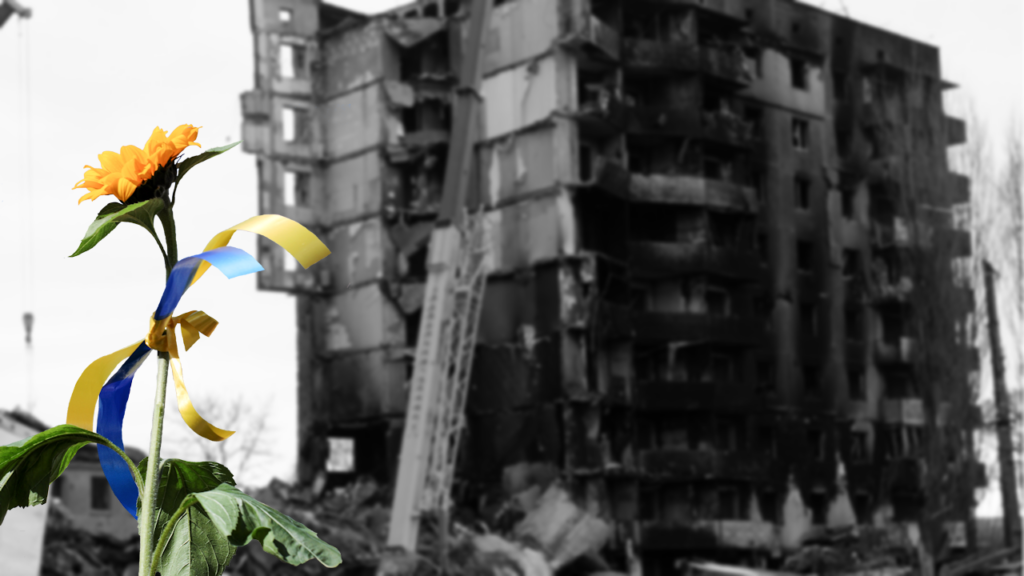The tragedy in Ukraine continues to unfold as Russian missiles and artillery shells continue to destroy critical infrastructure. Even as buildings continue to collapse, however, discussions about how to rebuild the country are underway. According to Brookings Institution analysts, Dave Skidmore, David Wessel, and Elijah Asdourian, “Even as Ukraine continues its efforts to reclaim territory occupied by Russia, the Ukrainian government and those of its allies, as well as international financial institutions and think tanks around the world, are planning the governance and financing of its recovery in the months immediately after the war and its longer-term reconstruction and modernization. Though the duration of the war remains uncertain, all parties believe now is the time to begin planning for Ukraine’s future.”[1] In a previous article, I indicated I would discuss some of the best reconstruction practices that have been identified by various organizations, which, if implemented, can help to ensure successful reconstruction of war torn Ukraine.[2]
Reconstruction Best Practices
The challenge facing the Ukrainian people is enormous. Daniel S. Hamilton, a Nonresident Foreign Policy Senior Fellow at Brookings’ Center on the United States and Europe, reports, “The World Bank projects Ukraine’s economy to shrink by 35% this year. Inflation looks to spike to 30%. Ukraine’s health system is ‘facing its darkest days in the war so far,’ according to the World Health Organization (WHO). Nearly half of Ukraine’s energy grid was knocked out by Russia’s recent strikes. Practically all big thermal and hydroelectric power plants have been damaged. People across the country are suffering from serious degradation of essential services, including access to clean water, sanitation, fuel, and electricity.”[3] According to Skidmore and his colleagues, “The overarching goal of reconstruction should be to transform Ukraine’s economy and society by modernizing — not only its infrastructure, but also its economic, political, and social institutions, thus providing a decisive break from Ukraine’s Soviet past and paving the way for it to join the EU. Several plans use the phrase ‘build back better’.” Other best practices include:
• Strict oversight and monitoring. Historically, whenever large amounts of money are available for development and reconstruction, corruption follows the money. To ensure reconstruction efforts in Ukraine are optimized, sufficient oversight to prevent corruption and mismanagement must be put in place. Skidmore and his colleagues write, “Donor countries and institutions should rigorously and cooperatively oversee their reconstruction assistance to ensure the program’s goals are achieved and Ukraine’s endemic corruption thwarted. Essential elements of effective oversight include transparent procurement and financial management processes, clear achievement mileposts, and independent oversight and auditing mechanisms.”
• Ukrainians should take the lead in setting priorities for reconstruction and implementing it. Skidmore and his colleagues write, “Ukrainian representation should be diverse, including both national and local government officials, as well as leaders from civil society and the private sector.” Especially important is ensuring the plight of refugees is part of the mix. Brookings analysts, Kemal Kirişci and Sophie Roehse, explain, “Any comprehensive and effective reconstruction effort will inevitably have to address this question. During this time of uncertainty, the international community and hosting countries, together with the Ukrainian government, should start to think about how to integrate refugees in reconstruction strategies. They will ultimately form a vital part of any successful Ukrainian recovery.”[4]
• Reconstruction should cover all elements of economic development. Although reconstruction is often viewed as the rebuilding of infrastructure, a more holistic approach is necessary. Deloitte analysts, Stephen Lewarne, Nell Todd, Joe Mariani, Joniel Sung-Jin Cha, and Stuart Williamson, explain, “The reconstruction of Ukraine must go beyond the heavy task of rebuilding and refurbishing damaged physical infrastructure; the efforts, which should begin immediately, need to address all elements of economic development.”[5] Areas they insist must be included in any reconstruction plans include: physical infrastructure; education and workforce; financial sector; government services and revenue; and agriculture.
• Empower Ukraine’s human capital. The West has witnessed the remarkable resilience of the Ukrainian people. Investing in them is a good bet. Lewarne and his colleagues note, “The war has deprived Ukraine and the world of the country’s most valuable natural resource — not wheat, coal, oil, natural gas, nor metals, but an educated labor force and an ambitious young population. Ukraine has a highly skilled workforce — 70% of adults have at least a secondary degree.” They add, “Organizations supporting Ukraine’s reconstruction will need to find sustainable methods for the long term that will accelerate the return of a skilled labor force to Ukraine. The reconstruction’s administering agency should help encourage foreign firms with the ability to hire Ukrainians to do so. Encouraging the return of skilled workers is important for more than just economic development; it is important for the reconstruction effort itself. A highly skilled workforce with intimate knowledge of the needs of the country, Ukrainians themselves are in a perfect position to play central roles in the administration of reconstruction efforts.”
• Take a layered approach. Project management is often viewed in a step-by-step, sequential manner. When rebuilding a country, however, a linear approach simply won’t work. Lewarne and his colleagues explain, “All aspects of reconstruction are interdependent. Economic recovery depends on availability of skilled workers, but workers will return only if they have adequate and safe housing; housing projects require infrastructure to move construction materials, and improvements to infrastructure can only begin when funding is available, and so on. As a result, reconstruction projects should be layered together to build effects rather than ordered sequentially.”
Concluding Thoughts
Skidmore and his colleagues indicate that international patience will be required — but not an open-ended commitment. They explain, “Reconstruction will take time — several plans mention 10 years — but continuing assistance indefinitely would undermine Ukraine’s ability to achieve self-sufficiency. Assistance, at least in the early stages of reconstruction, should be primarily in the form of grants to avoid saddling Ukraine with unmanageable debt.” Hamilton believes U.S. political leadership must convince the American public that supporting the security and reconstruction of Ukraine is in the best interests of the United States. He explains, “Resilience may begin at home, but in today’s deeply interconnected world, no nation is home alone. The United States and its allies must do everything they can to help Kyiv resist Russia’s assaults, because Ukraine is emblematic of a broader ongoing struggle between forces of disruption and resilience. Ukraine must win, both off and on the battlefield. Its fight is our fight too.”
Footnotes
[1] Dave Skidmore, David Wessel, and Elijah Asdourian, “Financing and governing the recovery, reconstruction, and modernization of Ukraine,” The Brookings Institution, 3 November 2022.
[2] Stephen DeAngelis, “Looking Ahead: Ukraine Reconstruction,” Enterra Insights,
[3] Daniel S. Hamilton, “Forward resilience: How to help Ukraine win on and off the battlefield,” The Brookings Institution, 8 December 2022.
[4] Kemal Kirişci and Sophie Roehse, “Refugees must be central to the reconstruction of Ukraine,” The Brookings Institution, 6 January 2023.
[5] Stephen Lewarne, Nell Todd, Joe Mariani, Joniel Sung-Jin Cha, and Stuart Williamson, “The reconstruction of Ukraine: Historical lessons for postwar reconstruction of Ukraine,” Deloitte Insights, 10 October 2022.




